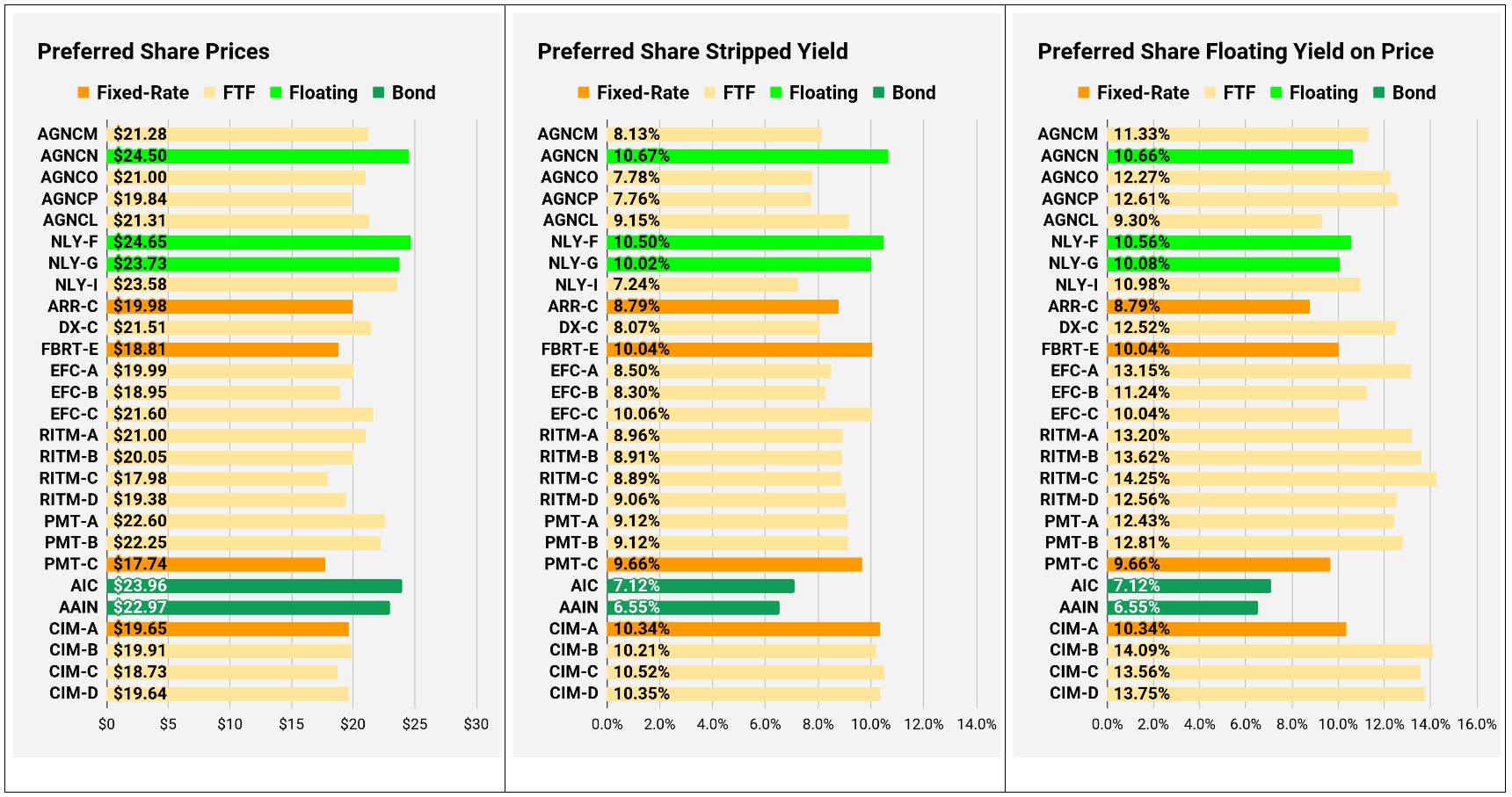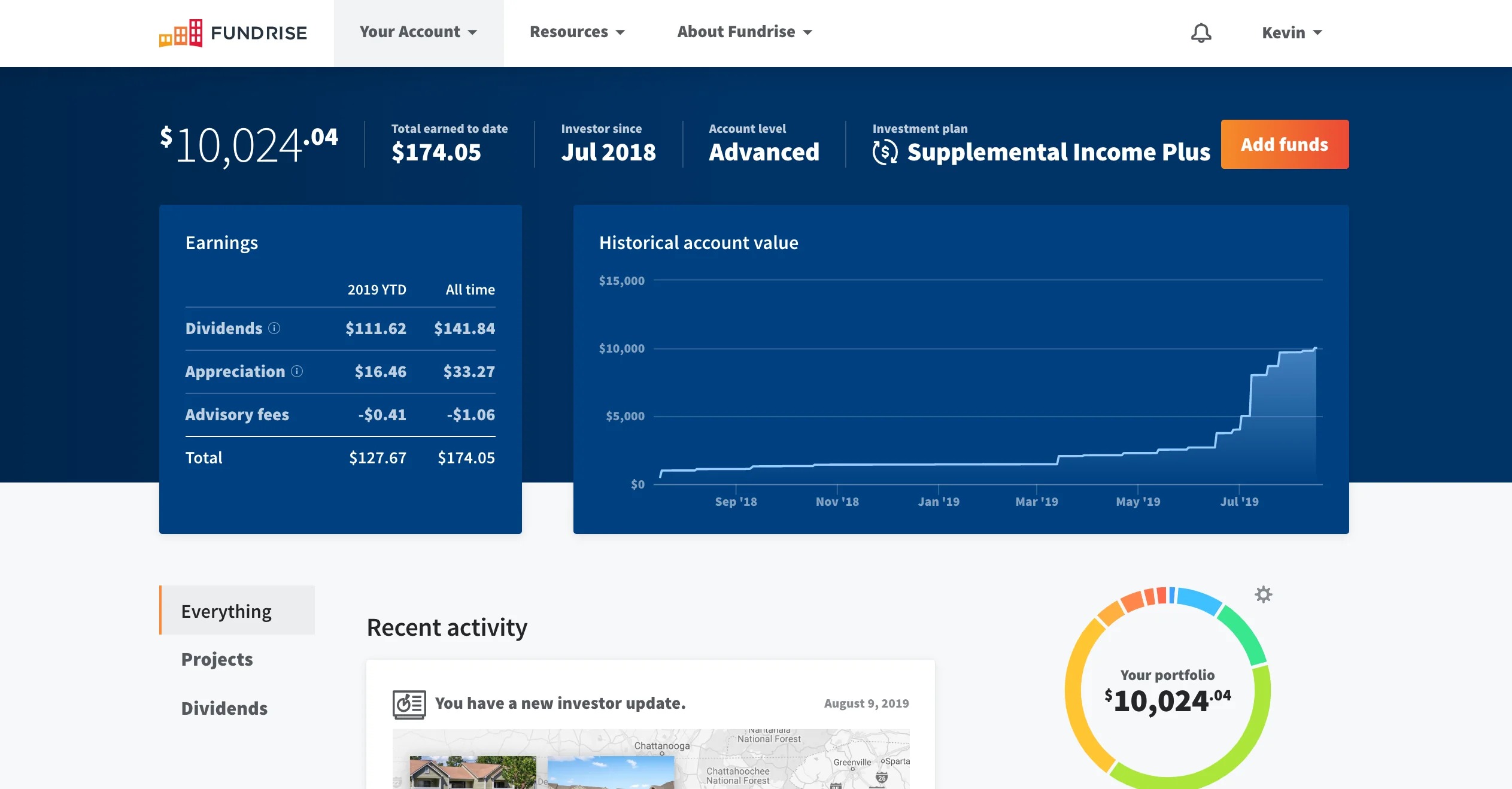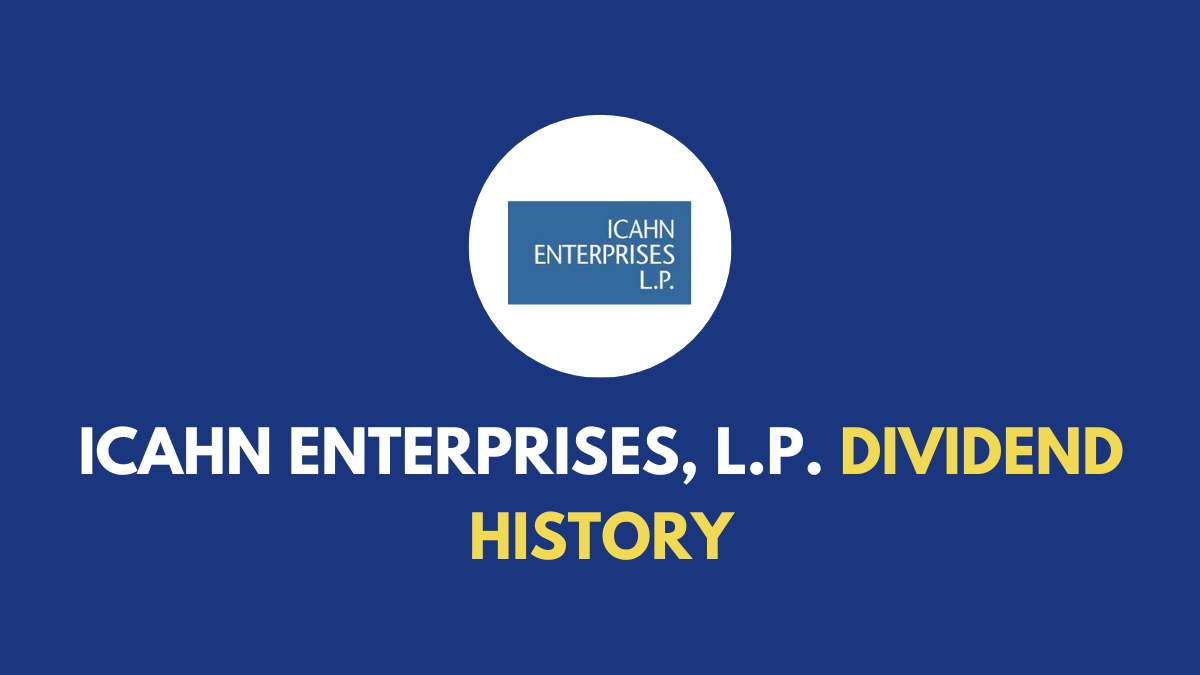

Finance
How Often Does Stellantis Pay Dividends
Published: January 3, 2024
Stellantis pays dividends in the finance sector, find out how often they distribute earnings and maximize your investment potential.
(Many of the links in this article redirect to a specific reviewed product. Your purchase of these products through affiliate links helps to generate commission for LiveWell, at no extra cost. Learn more)
Table of Contents
- Introduction
- What are Dividends
- Stellantis: A Brief Overview
- Stellantis Dividend Policy
- Frequency of Dividend Payments by Stellantis
- Factors Influencing Dividend Payments
- Historical Dividend Payments by Stellantis
- Comparisons with Other Automakers’ Dividend Policies
- Analysis of Stellantis’ Dividend Yield
- Conclusion
Introduction
Welcome to our comprehensive guide on Stellantis dividend payments. In this article, we will delve into the frequency at which Stellantis, one of the largest global automotive manufacturers, pays dividends to its shareholders.
If you’re an investor or someone interested in the world of finance, you probably understand the significance of dividends. Dividends are a form of distribution that companies make to their shareholders, typically in the form of cash or additional shares of stock. Many investors view dividends as a crucial component of their investment strategy, as they can provide a steady stream of income and potentially contribute to long-term wealth creation.
Stellantis, formed in 2021 through the merger of Fiat Chrysler Automobiles (FCA) and Groupe PSA, is a major player in the automotive industry. The company boasts an impressive portfolio of iconic brands, including Jeep, RAM, Peugeot, Citroën, and many more. Stellantis operates globally and generates significant revenue and profits from its diverse range of vehicles.
Understanding the dividend policy and payment frequency of a company like Stellantis is invaluable for investors aiming to make informed decisions about their portfolio. By examining Stellantis’ dividend history, policy, and factors that influence dividend payments, investors can gain insights into the company’s financial practices and potential return on investment.
Throughout this article, we will explore the frequency at which Stellantis pays dividends, analyze its dividend yield, and compare Stellantis’ dividend policy with that of other prominent automakers. Whether you’re an existing shareholder or simply curious about Stellantis’ financial performance, this article aims to provide you with a comprehensive understanding of Stellantis’ dividend payments.
What are Dividends
Before we dive into Stellantis’ dividend payments, let’s take a moment to understand what dividends are. Dividends are a distribution of a company’s profits to its shareholders. When a company earns profits, it has the option to reinvest the money back into the business or distribute it to shareholders.
Dividends are typically paid in cash, but they can also be paid in the form of additional shares of stock, known as stock dividends. The amount of dividends paid to shareholders is determined by the company’s dividend policy, which outlines the criteria used to determine the distribution and frequency of dividend payments.
Dividends can be an attractive feature for investors, as they provide a tangible return on investment. Companies that consistently pay dividends may be viewed as financially stable and successful, as they generate enough profits to reward shareholders.
Dividend payments can be advantageous for investors in multiple ways. First, they provide a steady stream of income, making them particularly appealing to income-focused investors, such as retirees looking for reliable sources of cash flow. Second, dividends can help reduce the overall risk of an investment portfolio, as they provide a cushion against potential declines in stock prices.
It’s important to note that not all companies pay dividends. Some companies, especially younger or growth-focused companies, may choose to reinvest all their profits back into the business to fuel expansion and innovation. These companies may instead offer potential returns through capital appreciation, meaning investors can potentially profit by selling their shares at a higher price than what they purchased them for.
Now that we have a better understanding of what dividends are, let’s explore how Stellantis, as one of the leading automakers, handles its dividend payments.
Stellantis: A Brief Overview
Stellantis is a multinational automotive manufacturer formed in 2021 through the merger of two prominent companies in the industry: Fiat Chrysler Automobiles (FCA) and Groupe PSA. This merger created one of the largest automotive companies in the world, with a presence in over 130 countries and a diverse portfolio of 14 brands.
The merger between FCA and Groupe PSA was based on the shared goal of creating a global leader in the automotive industry, capable of driving sustainable mobility and innovation. Stellantis operates through various divisions, including Passenger Cars, Commercial Vehicles, and Components, and is committed to delivering superior products that meet the evolving needs of consumers.
With a rich heritage and a wide range of popular brands, Stellantis stands as a prominent player in the automotive market. Some of its well-known brands include Jeep, Ram, Dodge, Alfa Romeo, Peugeot, Opel, and Citroën, among others. Stellantis offers a diverse lineup of vehicles, from compact cars and SUVs to commercial trucks and high-performance sports cars, catering to a broad spectrum of consumer preferences.
Stellantis has a strong global presence, with manufacturing facilities located in key regions, including North America, Europe, Latin America, and Asia-Pacific. This allows the company to serve a vast customer base and adapt to regional market demands effectively.
The formation of Stellantis signifies a new era for both FCA and Groupe PSA, as it brings together their combined expertise, resources, and innovative capabilities. By leveraging the strengths of both companies, Stellantis aims to achieve synergies and drive sustainable growth while remaining at the forefront of technological advancements and market trends.
Now that we have an understanding of Stellantis as a company, let’s explore its dividend policy and the frequency at which it pays dividends to its shareholders.
Stellantis Dividend Policy
Stellantis, as a publicly traded company, has a dividend policy that outlines its approach to distributing profits to shareholders. The dividend policy is an important factor for investors to consider when evaluating the potential return on their investment.
Stellantis’ dividend policy is guided by several key principles. First and foremost, the company aims to maintain a strong financial position and generate sustainable profits. This ensures that Stellantis has the necessary funds to invest in research and development, innovation, and future growth opportunities.
The company’s dividend policy also takes into account the cyclical nature of the automotive industry. Stellantis recognizes that the industry’s performance can be influenced by various factors, such as economic conditions, consumer demand, and competitive pressures. As a result, the dividend policy aims to strike a balance between providing consistent returns to shareholders and ensuring the financial stability of the company.
Stellantis’ dividend policy is also influenced by regulatory requirements and the need to comply with applicable laws and regulations. The company operates in multiple jurisdictions, each with its own set of rules governing dividend distributions. Stellantis strives to adhere to these regulations while optimizing the returns for its shareholders.
Furthermore, Stellantis’ dividend policy takes into account the company’s long-term objectives and strategic priorities. The company may choose to allocate a portion of its profits for reinvestment in new technologies, product development, or geographical expansion, which could impact the amount of dividends paid out to shareholders.
Overall, Stellantis’ dividend policy reflects its commitment to creating long-term value for its shareholders while maintaining financial prudence and ensuring the company’s continued growth and competitiveness in the dynamic automotive industry.
Next, let’s explore the frequency at which Stellantis pays dividends to its shareholders and the factors that influence these dividend payments.
Frequency of Dividend Payments by Stellantis
Stellantis follows a regular dividend payment schedule to distribute profits to its shareholders. The frequency at which Stellantis pays dividends is an important aspect for investors to consider when assessing the potential income from their investment.
Historically, Stellantis has paid dividends on an annual basis. This means that shareholders typically receive dividend payments once per year. The specific dates for dividend declaration, record date, and payment date are determined by the company’s Board of Directors.
It’s important to note that the dividend payment schedule may be subject to change based on various factors, including the company’s financial performance, cash flow position, and strategic priorities. Stellantis periodically assesses its ability to generate sustainable profits and maintain a strong financial position before deciding on the dividend payment schedule.
The amount of dividends paid by Stellantis is typically determined by the company’s financial results and profits for the fiscal year. The Board of Directors takes into consideration various factors, including the company’s earnings, cash flow, capital requirements, and any legal or regulatory restrictions, when determining the dividend amount.
It’s worth mentioning that dividend payments are subject to approval by shareholders during the company’s Annual General Meeting (AGM). The AGM provides an opportunity for shareholders to review the company’s financial performance and vote on matters, including the approval of dividends. Shareholders have a voice in determining the dividend payments through their voting rights during the AGM.
In summary, Stellantis pays dividends on an annual basis, typically determined by its financial performance and subject to approval by shareholders during the AGM. The specific dividend payment dates and amounts are determined by the company’s Board of Directors. Investors should stay informed about the company’s dividend payment schedule and review the company’s financial performance to assess the potential income from their investment.
Next, let’s explore the factors that influence dividend payments by Stellantis.
Factors Influencing Dividend Payments
Several factors influence the dividend payments made by Stellantis to its shareholders. Understanding these factors can provide valuable insights for investors seeking to assess the consistency and potential growth of dividend income from their investments.
1. Financial Performance: Stellantis’ financial performance plays a significant role in determining dividend payments. The company’s earnings, profitability, and cash flow are essential considerations. If Stellantis generates strong profits and maintains a healthy cash flow, it provides a solid foundation for dividend payments.
2. Market Conditions: The overall economic conditions and market dynamics can impact Stellantis’ dividend payments. Factors such as consumer demand, industry competition, and macroeconomic trends can influence the company’s financial performance and its ability to distribute dividends.
3. Capital Requirements: Stellantis continuously evaluates its capital requirements for research and development, expansion plans, and strategic investments. The company may choose to allocate a portion of its profits for these purposes, which can impact the amount available for dividend payments.
4. Debt Obligations: Stellantis’ debt obligations and financing activities also play a role in determining dividend payments. The company needs to maintain a prudent balance between servicing its debts and returning value to shareholders through dividends.
5. Regulatory and Legal Factors: Stellantis operates in multiple jurisdictions, each with its own set of regulations governing dividend distributions. Compliance with these regulations and any legal restrictions on dividend payments can impact the frequency and amount of dividends paid.
6. Strategic Priorities: Stellantis’ long-term strategic priorities also influence dividend payments. The company may choose to retain a portion of its profits for reinvestment in new technologies, sustainability initiatives, or geographic expansion, which can impact the amount available for distribution as dividends.
7. Shareholder Expectations: Stellantis aims to strike a balance between meeting the expectations of its shareholders and maintaining the financial health of the company. The company considers the dividend expectations of its shareholders in determining dividend payments.
It’s important to note that dividend payments are not guaranteed, and they can vary from year to year based on these factors. As an investor, it’s essential to monitor Stellantis’ financial performance, market conditions, and the company’s strategic direction to assess the sustainability and potential growth of dividend payments.
Now that we understand the factors influencing dividend payments, let’s take a look at the historical dividend payments made by Stellantis.
Historical Dividend Payments by Stellantis
Examining the historical dividend payments made by Stellantis provides valuable insights into the company’s track record of distributing profits to its shareholders. While Stellantis is a relatively new entity resulting from the merger of FCA and Groupe PSA, we can still analyze the dividend payments made by the predecessor companies.
Prior to the merger, Fiat Chrysler Automobiles (FCA) had a history of paying dividends to its shareholders. FCA typically paid dividends on an annual basis, with the specific payment dates determined by the company’s Board of Directors. The dividend amounts varied depending on the company’s financial performance, earnings, and cash flow position.
Groupe PSA, on the other hand, had a different dividend payment approach. The company also paid dividends on an annual basis, with the specific dates determined by its Board of Directors. Groupe PSA’s dividend payments were influenced by factors such as its financial performance, profitability, and strategic priorities.
Following the merger, Stellantis continues to uphold a commitment to providing returns to its shareholders. While Stellantis’ dividend payment history is relatively limited at this point, it is important to note that the company’s dividend policy is shaped by the practices of its predecessor companies and the underlying principles of financial prudence and sustainable profitability.
Investors should stay informed about Stellantis’ dividend announcements and review the company’s financial performance to assess the potential income from their investment. It is also worth considering the broader context of the automotive industry and macroeconomic factors that may impact dividend payments.
As Stellantis continues its journey as a merged entity, it is expected to leverage the strengths and resources of both FCA and Groupe PSA to drive sustainable profitability and shareholder value. This commitment to financial stability and growth will likely influence future dividend payments by Stellantis.
In summary, Stellantis inherited a history of dividend payments from its predecessor companies, FCA and Groupe PSA. While the specific dividend payment dates, amounts, and frequencies may vary, Stellantis remains committed to providing returns to its shareholders. Investors should closely monitor Stellantis’ dividend announcements and assess the company’s financial performance to gain insights into the potential income from their investment.
Next, we will compare Stellantis’ dividend policy and payments with those of other prominent automakers, allowing for a broader perspective on the industry.
Comparisons with Other Automakers’ Dividend Policies
Understanding how Stellantis’ dividend policy and payments compare to those of other prominent automakers in the industry can provide valuable insights into the company’s position within the market. Here, we will explore the dividend policies of a few notable automakers and analyze how Stellantis stacks up in comparison.
1. Ford Motor Company: Ford is one of the largest automakers globally, known for its iconic brand and extensive vehicle lineup. Ford has a longstanding tradition of dividend payments. Historically, the company has paid dividends on a quarterly basis, providing shareholders with more frequent cash flows. The dividend amounts are determined by Ford’s financial performance and the approval of its Board of Directors.
2. General Motors Company: General Motors (GM) is another major player in the automotive industry. GM has a dividend policy that emphasizes returning value to shareholders. The company typically pays dividends on a quarterly basis, similar to Ford. The specific dividend amounts are influenced by factors such as GM’s earnings, cash flow, and overall financial health.
3. Toyota Motor Corporation: Toyota is known for its strong financial position and commitment to stable dividend payments. The company’s dividend policy aims to maintain an attractive dividend yield while ensuring sustainable growth. Toyota pays dividends on a semi-annual basis, offering shareholders a regular income stream. The dividend amounts are determined by the company’s profits and financial performance.
When comparing Stellantis to these automakers, it is important to consider each company’s unique circumstances, including financial performance, market position, and strategic priorities. Stellantis, as a newly formed entity resulting from a merger, may have a different dividend payment history and approach compared to these well-established automakers.
While Stellantis has historically paid dividends on an annual basis, some automakers offer more frequent dividend payments, such as quarterly or semi-annual. The frequency of dividend payments can be an important consideration for investors seeking regular income from their investments.
Additionally, the dividend amounts are influenced by the financial performance of each automaker. Comparing Stellantis’ dividend yield, which is the dividend per share divided by the stock price, to other automakers can provide insights into the potential return on investment.
It is recommended that investors evaluate Stellantis’ dividend policy and payments in the context of the company’s financial performance and strategic goals. This analysis, along with comparisons to other automakers’ dividend policies, can help investors make informed decisions about their investment in Stellantis.
Next, let’s analyze Stellantis’ dividend yield to gain a deeper understanding of the potential returns for shareholders.
Analysis of Stellantis’ Dividend Yield
An important metric to consider when assessing the potential returns from an investment in Stellantis is the company’s dividend yield. The dividend yield is a financial ratio that measures the annual dividend payment as a percentage of the current stock price. It provides insight into the income potential for shareholders.
As Stellantis is a newly formed entity resulting from the merger of FCA and Groupe PSA, its dividend payment history is limited. However, by analyzing the dividend yield, we can gain insights into the potential return on investment based on the current stock price and projected dividend payments.
The dividend yield is influenced by several factors, including the dividend policy, dividend payment frequency, and the company’s financial performance. A higher dividend yield indicates a higher return on investment from dividend payments, assuming the stock price remains constant.
To calculate the dividend yield for Stellantis, we divide the annual dividend per share by the current stock price and multiply the result by 100 to express it as a percentage.
It’s important to note that the dividend yield is subject to change based on several factors, including changes in the stock price and dividend payments. Investors should regularly monitor Stellantis’ dividend announcements and financial performance to stay updated on the potential income from their investment.
When comparing Stellantis’ dividend yield with its industry peers, it’s important to consider factors such as the company’s financial stability, growth prospects, and the broader market conditions. A higher dividend yield may indicate that the market perceives greater risk or slower growth potential, while a lower dividend yield may suggest a more stable and profitable company.
A comprehensive analysis of Stellantis’ dividend yield requires careful consideration of other financial and non-financial factors, such as the company’s dividend policy, cash flow, debt levels, competitive landscape, and market outlook. Investors should also assess their own investment goals and risk appetite when evaluating the potential returns from dividends.
Ultimately, understanding Stellantis’ dividend yield can provide valuable insights into the income potential of an investment in the company. However, it should be used in conjunction with other financial metrics and a comprehensive assessment of the company’s financial health and market prospects.
Now, let’s conclude our discussion on Stellantis’ dividend payments.
Conclusion
In conclusion, Stellantis, one of the largest global automotive manufacturers, follows a dividend policy that aims to provide returns to its shareholders while maintaining a strong financial position and sustainable growth. Although Stellantis is a newly formed entity resulting from the merger of FCA and Groupe PSA, it inherits a history of dividend payments from its predecessor companies.
Stellantis typically pays dividends on an annual basis, subject to approval by shareholders during the Annual General Meeting. The specific dividend payment dates and amounts are determined by the company’s financial performance, profitability, and strategic priorities. While the dividend payment frequency for Stellantis may be less frequent compared to some other automakers in the industry, it is important to consider the company’s unique circumstances and long-term objectives.
Investors should analyze Stellantis’ dividend yield, which measures the dividend payment as a percentage of the current stock price, to assess the potential return on investment. However, it is crucial to consider other financial and non-financial factors, such as the company’s financial performance, market conditions, and strategic direction, when evaluating the income potential from dividends.
Comparisons with other automakers’ dividend policies can provide valuable insights into Stellantis’ position within the industry. Automakers like Ford and General Motors have historically paid dividends on a more frequent basis, while Toyota emphasizes stable dividend payments on a semi-annual basis. Understanding these comparisons can help investors make informed decisions about their investment in Stellantis.
As with any investment, it is important for shareholders and potential investors to conduct thorough research, monitor Stellantis’ financial performance, and consider their investment goals and risk tolerance. Stellantis’ dividend payments should be evaluated in conjunction with the broader financial and operational performance of the company to have a comprehensive understanding of its potential as an investment.
In summary, Stellantis’ dividend payments, frequency, and dividend yield are important factors to consider when assessing the income potential and return on investment for shareholders. By staying informed about the company’s dividend policy, financial performance, and market conditions, investors can make well-informed decisions regarding their investment in Stellantis.














